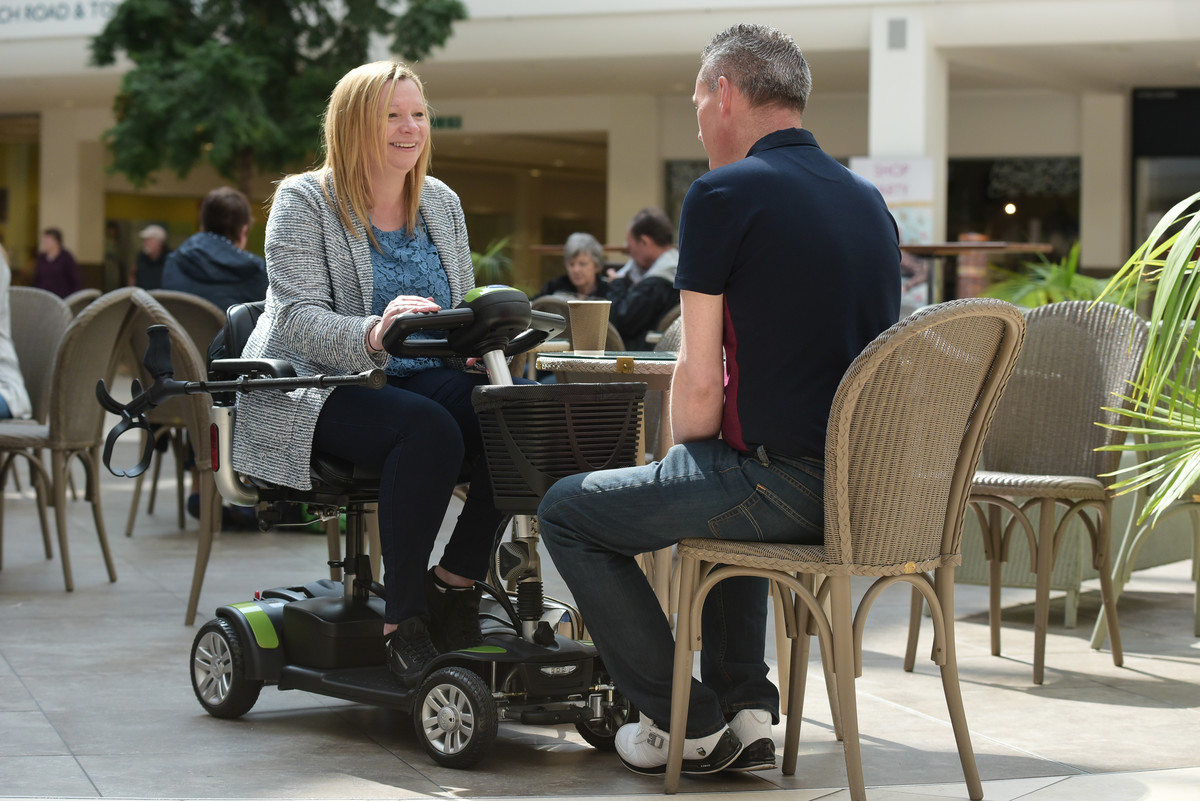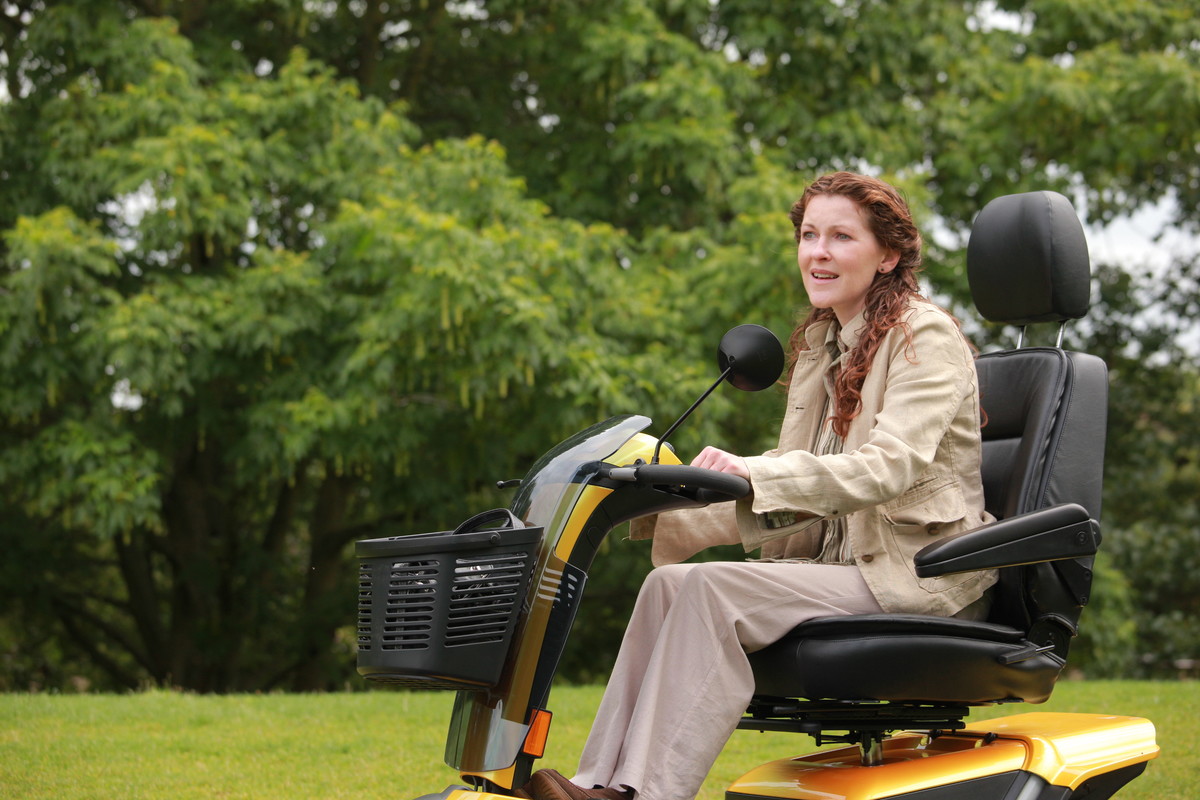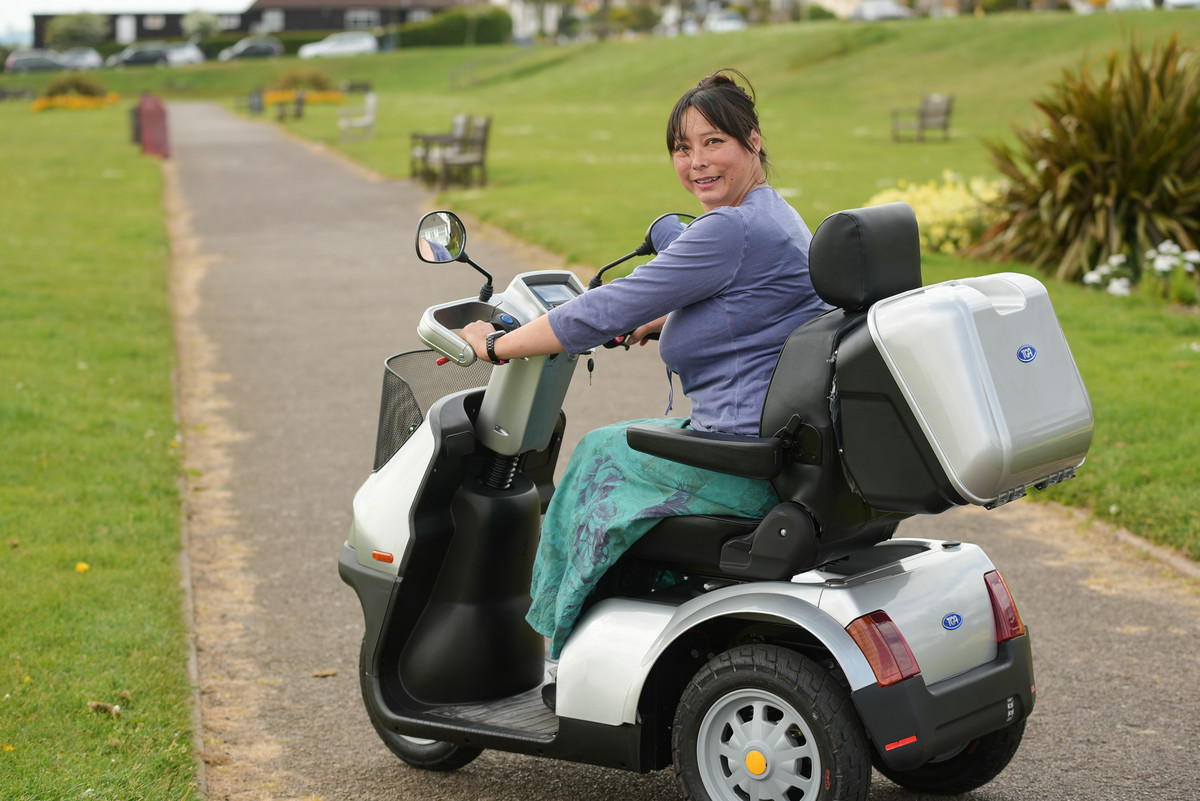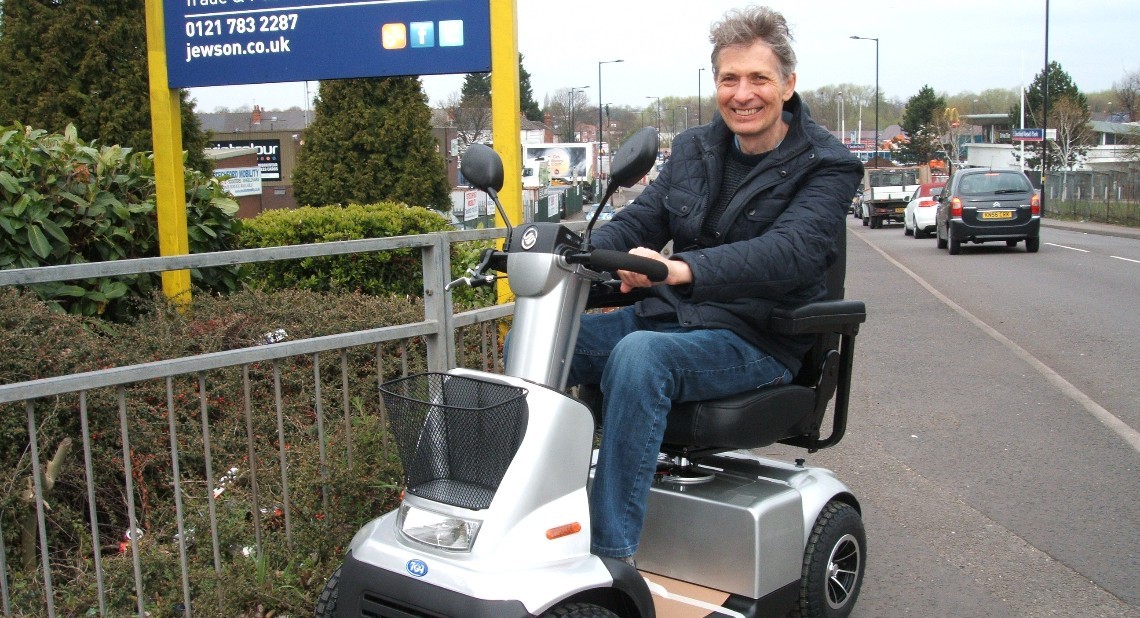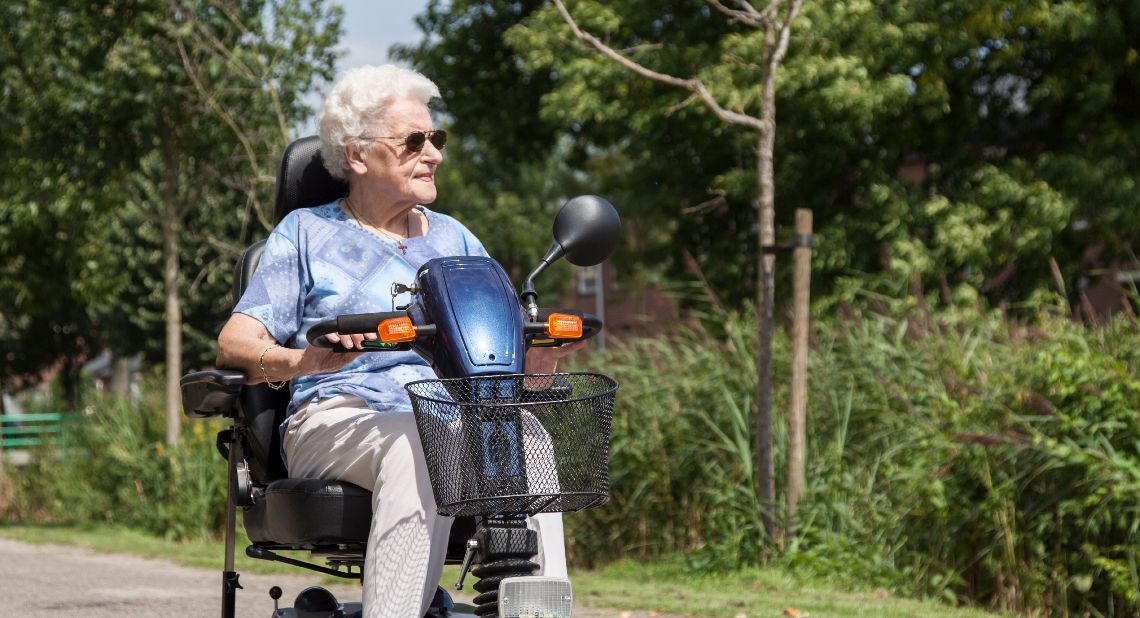Many people who don’t use mobility scooters themselves aren’t aware there is more than one type. There are several kinds with different features for people who intend to use their scooter in different ways.
For example, some people might only need scooters to travel locally on pavement, while others want to be able to travel on public roads. In fact, some might find while looking for the best car for their travel needs that a mobility scooter is far better suited to them!
Thanks to advancements in battery technology, powered mobility scooters now have good ranges — even the smallest scooters tend to have a range of around 10 miles, which is great if you mostly want to go out locally. At the Motability Scheme, we’ve classified our scooters into three different categories to help make it easier to sort through the crowd.
Small scooters are often the most lightweight and nimble for moving around tight places
The first classification is simply called small scooters. As you might expect, these scooters are small, light, and are the easiest to move around. Often, this form of scooter can be taken apart so it can be stored easily — in the boot of a car, for example. Designed with transportation in mind, the small scooter is constructed from lighter metals and other materials. This does have some drawbacks, as the scooter itself is lighter and so can’t carry as much weight as larger scooters. Also, its batteries are smaller, meaning the total range is also lower.
Generally speaking, small scooters are best suited for users who don’t often need to carry larger weights, don’t need to travel too far, and need a little bit of flexibility when it comes to getting around.
Medium scooters often have a longer battery life and can carry more weight
In the next category, we go up a size to medium scooters, which come in two classes, Class 2 and Class 3. These scooters are more solid and are able to carry greater weight and bigger batteries. With road legal and non-road legal classes available, the medium scooter offers extra choices for customers, and still comes with a strong range of up to 20 miles.
Again, it isn’t perfect for everyone, as they are difficult to break down into components for storage. While this will be a drawback for some people, other mobility scooter users, such as those without a car, don’t need to store their scooter in smaller spaces like car boots and so won’t be concerned.
The biggest difference between Class 2 and 3 is that a Class 3 scooter can be used on the road when taxed. Road tax is included with the Motability Scheme and your dealer will take care of organising this for you.
Large scooters are often suitable if the scooter is your primary mode of transport
The final category of scooter — and we think you already know where this is going — is the large scooter class. All large scooters on the Motability Scheme are Class 3, meaning, as we’ve mentioned, they can be used on public roads when taxed. They can also support further weight and have the greatest range of the scooter classes. Unlike smaller scooters, they are not easily transported and are suitable for people who would be dedicated mobility scooter users and would rely on it as their primary mode of transport.
The large scooter is the most advanced form of mobility scooter, capable of travelling up to 30 miles — and some can even go off-road! Although you might not be planning on tackling any rally stages anytime soon, it is always good to know your vehicle can handle more difficult terrain if necessary. While all scooters ideally need to be stored in a safe, dry place such as a garage or a secure shed, Class 3 scooters are bigger and so need more space.
With plenty of choices for you out there, we are confident that the Motability Scheme has what you need, and our trained advisors are always on hand to help you decide which scooter fits your requirements.Find your nearest dealer and find your perfect scooter!
Read More Articles Like This:
- A Guide To Travelling By Scooter And Powered Wheelchair
- Learning How To Drive With A Disability
- 16 Great Travel Apps For People With Disabilities
![]()
